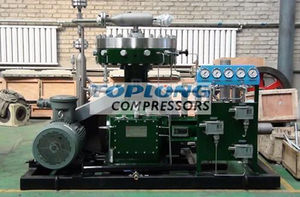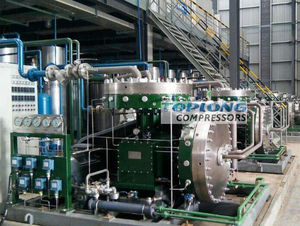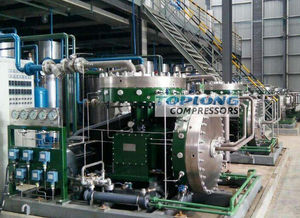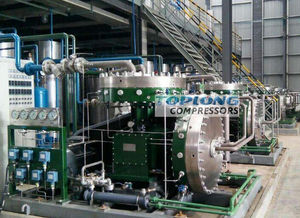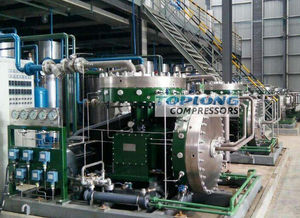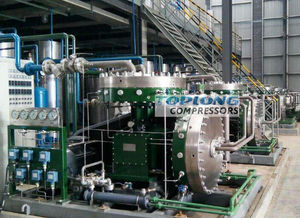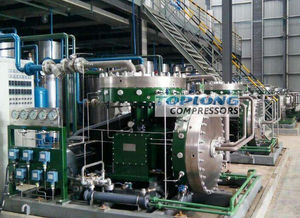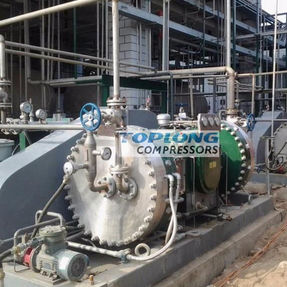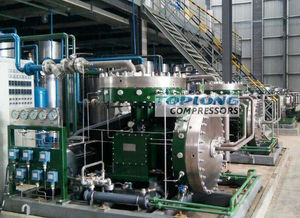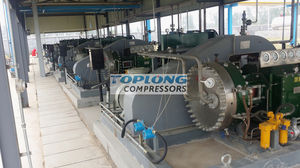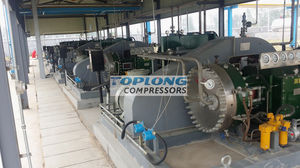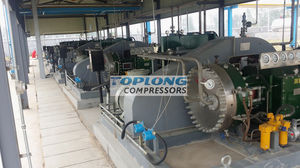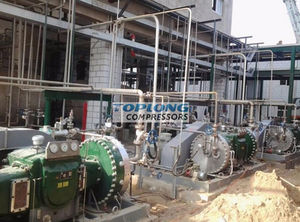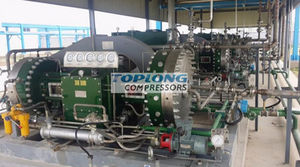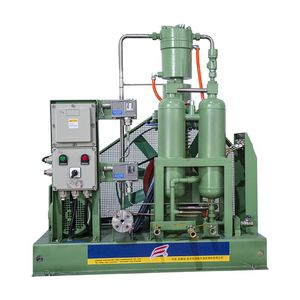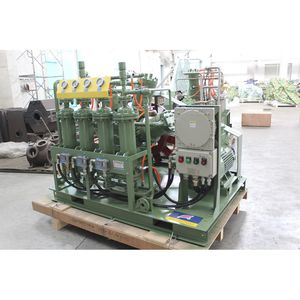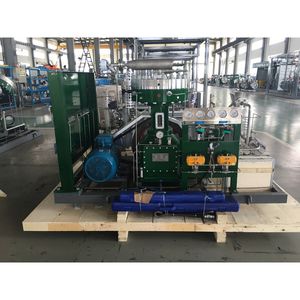
- Hydraulics - Pneumatics
- Compressor
- Membrane compressor
- Wenling Toplong Electrical & Mechanical Company
- Products
- Catalogs
- News & Trends
- Exhibitions
Diaphragm compressor G seriesnitrogenhydrogenfor oxygen







Add to favorites
Compare this product
Characteristics
- Technology
- diaphragm
- Type
- nitrogen, hydrogen, for oxygen, helium, argon
- Power source
- AC
- Portability
- stationary
- Lubrication
- oil-free
- Application domain
- for hydrogen application
- Other characteristics
- high-pressure
- Pressure
Min.: 1.3 MPa
Max.: 40 MPa
- Flow
Min.: 3 m³/h
(105.94 ft³/h)Max.: 70 m³/h
(2,472.03 ft³/h)- Power
Min.: 1.5 kW
(2.04 hp)Max.: 7.5 kW
(10.2 hp)
Description
Working principle of the hydrogen compressor
Hydrogen compressor structure is more complex, the more important components are cast iron cylinder, cast iron cylinder sleeve, cast iron cylinder head, cast iron crankshaft, connecting rod, crosshead (including crosshead slide), filler, piston (including piston ring), scraping oil ring, stainless steel piston connecting rod, stainless steel gas valve, etc., in addition to some auxiliary equipment, such as gas filter, buffer, lubricating oil pipeline, etc.Like other reciprocating compressors, the hydrogen compressor comprises three processes: suction, compression, and exhaust.Under the motor drive, the crankshaft drives the crosshead, the piston connecting rod and the piston back and forth in the cylinder, and the gas is finally discharged through the air valve under the piston compression.
Application of hydrogen compressor
At present, the huge environmental pressure and the gradually exhausted traditional energy sources of fossil fuels make the countries around the world actively seek for new and clean energy sources.Hydrogen energy and hydrogen fuel cells are paying more and more attention in the world due to their good environmental performance, high energy conversion efficiency and certain economy.To promote the development of hydrogen energy, the improvement of hydrogen energy infrastructure is essential.Hydrogen compressor is one of the three core key monomer equipment needed for the construction of hydrogenation station.
It is widely used in oxygen production, medical treatment, food, medicine, chemical industry, petroleum and other scenes requiring clean gas.
VIDEO
Catalogs
No catalogs are available for this product.
See all of Wenling Toplong Electrical & Mechanical Company‘s catalogsOther Wenling Toplong Electrical & Mechanical Company products
Oil Free Diaphragm Compressor
Related Searches
- Compressor stage
- Air and dry gas compressor
- Positive-displacement compressor
- Fixed compressor
- Industrial compressor
- Electrically-powered compressor
- Reciprocating compressor
- Oil-injected compressor
- Dry compressor
- Compact compressor
- Screw compressor
- Mobile compressor
- Low-noise compressor
- Cooled compressor
- Tank-mounted compressor
- Multi-stage compressor
- Gas compressor
- High-efficiency compressor
- Oil-lubricated compressor
- Air-cooled compressor
*Prices are pre-tax. They exclude delivery charges and customs duties and do not include additional charges for installation or activation options. Prices are indicative only and may vary by country, with changes to the cost of raw materials and exchange rates.




